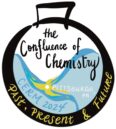CERM 2024 Plenary Lectures

Wednesday Plenary Lecture: Krzysztof Matyjaszewski
Wednesday, November 6, 5 PM EST
Macromolecular Engineering by Atom Transfer Radical Polymerization
Advanced nanostructured functional materials were designed and prepared by reversible deactivation radical polymerization. Copper-based ATRP (atom transfer radical polymerization) catalytic systems with polydentate nitrogen ligands are among most efficient reversible deactivation radical polymerization systems. Recently, by applying new initiating/catalytic systems, Cu level in ATRP was reduced to a few ppm. ATRP of acrylates, methacrylates, styrenes, acrylamides, acrylonitrile and other vinyl monomers was controlled by various external stimuli, including electrical current, light, mechanical forces and ultrasound, also in the presence of air. ATRP enables rational design of (co)polymers with specific architecture and functionality, followed by precise and efficient polymer synthesis and processing to prepare advanced materials with target properties. Consequently, various copolymers, molecular brushes, hybrid materials and bioconjugates were prepared with high precision. Examples of functional (bio)hybrid materials for applications related to biology, environment, and energy will be presented.Prof. Kris Matyjaszewski is the J.C. Warner University Professor of Natural Sciences and director of the Center for Macromolecular Engineering at Carnegie Mellon University. Learn more about Prof. Matyjaszewski.

Thursday Plenary Lecture: Claudia Turro
Thursday, November 7, 5 PM EST
Transition Metal Complexes for Applications in Photo-Medicine and the Production of Solar Fuels
Molecules that absorb visible light may use this energy provided photons to access reactions not possible from their ground electronic states. These excited state molecules can then be used for a number of applications, including sensors, energy conversion schemes, and photomedicine. The use of light to activate the action of a drug has become important as mode of cancer therapy because it is significantly less invasive and poses low levels of systemic toxicity to the patient, thus reducing undesirable side effects. Photoinduced ligand exchange has been used to release drugs with spatiotemporal control which, together with the production of 1O2, represent important reactions initiated by light with potential applications in photochemotherapy (PCT). These photoinduced reactions of Ru(II) and Rh2(II,II) complexes will be presented, along with their activity towards biological targets and cancer cells. The search for renewable, clean sources of energy is critical for the future of the planet. The use of abundant sunlight to generate electricity or to efficiently and catalytically transform inexpensive simple molecules into clean fuels, such as hydrogen from water, remains a challenge. Systems for efficient conversion of sunlight into chemical fuels require strong light absorption that is well-matched to the solar spectrum, catalysts that affect the desired transformation, followed by combining the light absorber (LA) with the catalyst (CAT) into functional LA-CAT architectures. Current LAs used in these applications typically do not absorb the entire solar spectrum efficiently from the ultraviolet, UV, to the near-IR (infrared) range, such that some fraction of photons that make up the solar spectrum are not utilized. We have developed new Rh2(II,II) complexes that serve as dyes that absorb light strongly throughout the visible region and into the near-IR. These compounds are capable of undergoing excited state redox processes, such as the photoinduced reduction of substrates and semiconductors. In addition, complexes with longer excited state lifetimes are able to act as single-molecule photocatalysts for the production of hydrogen with red light. The role of the molecular structure and metal-metal distance on the excited state properties will be discussed. Prof. Claudia Turro is Chair and Dr. Melvin L. Morris Professor of Chemistry at the Ohio State University. Learn more about Prof. Turro.
Friday Plenary Lecture: Wesley Transue
Friday, November 8, 6 PM EST
